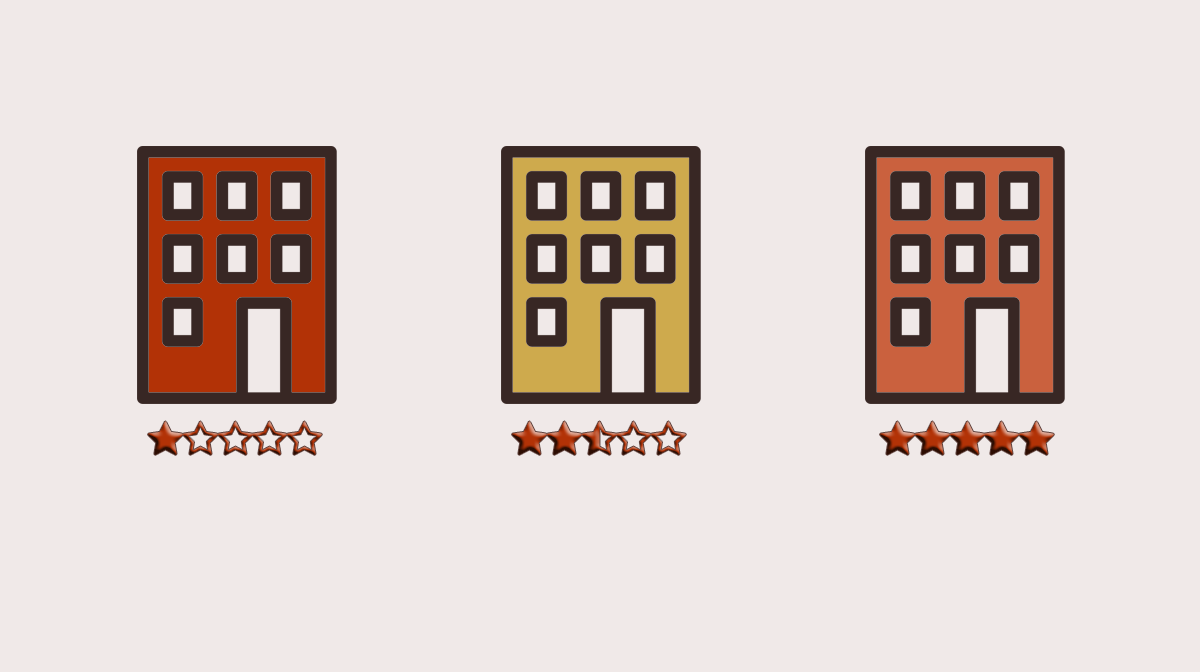"I'll be back Friday (I promise!) with a special take on quality for folks who are looking for rentals. See you then."
Those were the last words I wrote in my old real estate blog, StrawStickStone, on April 24, 2013. So much for promises. I had at that time been writing 3 entries a week for over a year, my neighborhood was recovering from major flooding, and I couldn't really think of how I wanted to write the article on quality in rentals. It has lurked in the back of my mind trying to take shape for over four years. In retrospect the core problem was the sheer impossibility of talking about quality in renting while still maintaining the positive spin necessary for a real estate sales blog.
The words "quality" and "apartment" should not be too closely linked. One should, of course, find something that will still look relatively the same when you move out as it did when you moved in. But if you go too far in the direction of good quality you risk living with an inexperienced landlord or in a location that's only rented temporarily until it can be sold. However, in these waning days of the nearly extinct security deposit it has become more important to find rental housing of at least medium quality unless you want to have to pay out of pocket for repairs after you leave.
To that end we're not talking about how to spot a luxury apartment. We're talking about how to spot a solid apartment that will survive a 2 year stay with average use by the maximum allowable number of occupants.
The choice of quality materials makes a statement about how the landlord operates, but also about how they view their tenants. Choosing the cheapest options may indicate that a landlord expects their tenants to trash their housing, which is never a good sign. A reasonable amount of wariness around tenants is a good thing for landlords, but to outfit an entire apartment based on mistrust is, in most situations outside of college housing, a warning sign.
In Chicago the building codes provide a bare minimum for acceptable building condition. According to the American Housing Survey, in 2013 there were still approximately 1500 cold water flats in Chicago and 2900 rentals with no toilet. 10,900 units had only microwave ovens for cooking. These are obviously extreme examples, but they serve to illustrate the huge range of housing quality we're looking at when it comes to the Chicago rental housing inventory.
There are old buildings that predate modern regulations, grandfathered into the system. There are high density buildings from the 1950s and 1960s constructed in a real hurry to accommodate huge floods of new residents after World War 2, with all the accompanying quality concerns you'd expect. There are high density buildings from the past few years, constructed in a hurry in response to a sudden jump in available funds for new construction after a long drought. There are landlords with small portfolios who can only buy the same equipment available to your average homeowner. There are others with huge numbers of apartments who can buy supplies like paint, appliances and hardware at wholesale prices. However, with this diversity in mind there are still a few signs of good quality construction in any apartment that Chicago renters can watch for during their housing search.
- The Lease. In Chicago, the lease itself is a real sticking point for many landlords. Chicago's laws are specific enough that a landlord cannot use a standard issue lease form from a site like Nolo.com and remain entirely within the bounds of the law. The Chicago Association of Realtors (CAR) provides a fully compliant lease form, as does the Association of Building Owners and Managers (ABOMA). Either of these forms indicates a good landlord that knows their stuff. However, the highest sign of quality in a lease is one of these forms accompanied by custom riders drafted by local, experienced attorneys.
- Moving Parts. I have often said that you can get a quick bead on the quality of an apartment by counting how many drawers exist in the kitchens and bathrooms. Cupboards are cheaper than drawers. Drawers that simply slide in are cheaper than ones that have mechanical rollers. Real doors on closets are more expensive and durable than bifold doors.
- Durable Materials. Specifically, flooring but other areas are also crucial. There are several choices for floor surfaces. Carpet is, in my opinion, the best option provided that it has a decently thick pile and is properly installed. It minimizes noise between floors and is relatively easy to replace. Hardwood is the 2nd best option. It can be noisy for people downstairs and holds up to multiple sandings before it needs replacement, but it is easily damaged by careless renters. Laminate is possibly the worst option, save for maybe bare concrete. Beyond the flooring, look for durable materials in the bathroom. Tile is better than flat surrounds. Toilet seats should fit their basins.
- Age of Appliances. One of the best tricks I learned from working with home inspectors is to take photos of the serial number labels on every appliance. You can then use the numbers when you get home to research the manufacture date and quality of each one. If the appliances were manufactured any time after about 1995 - the year when HGTV started broadcasting - chances are they were designed for looks rather than function, with planned obsolescence inherent in their construction. The sole exceptions are appliances designed for commercial use.
- Agents. There are all sorts of agents that a landlord can choose from to lease up their buildings. They can have an in-house leasing staff, hire a Realtor or a locator, or even do all the showings themselves. Chances are that a landlord will choose agents using the same criteria they apply to their other staff, including repair crews and office workers. If the landlord opts to use a sloppy agent, that's a real sign of problems in hiring and tenant screening. If an agent seems reluctant to contact the landlord with follow up questions, that's a sign of an overbearing or completely absent landlord. Bear in mind that in Chicago, apartment locator services can be included in the sphere of agents hired by the landlord.
- Gutters, Downspouts, Soffits and Fascia. These are the parts of the building that are most often overlooked when it comes to preventive maintenance. A housing inspector might ding a landlord for really decrepit exterior hardware on the building but in small buildings they can go untouched for years. The gutter is the metal pipework that runs along the edge of a roof to catch rain. The downspout is the vertical pipe attached to the gutter in order to carry water from the roof to the ground. A soffit is the section underneath a roof overhang. Fascia is the outward facing surface on the edge of a roof. All of these should be kept clean and in good working order. If they aren't, there's a big risk of water getting into the building. It's pretty easy to see when any of them are in need of repair, as they get rusty or bent. But people rarely look up, and it's easy for a landlord to miss that they are on their last legs.
- Number of Washers & Dumpsters. The general rule of thumb is that a building should have a four-yard dumpster for every 33 tenants. If there is laundry on site there should be one washer/dryer set for every 12-15 apartments, or a set for every 30 apartments in senior housing. Any less than this indicates a landlord that's skimping on quality.
What signs indicate a good quality apartment to you? Will you only consider the best of the best, even if it means paying through the nose? Are you willing to sacrifice quality for something that looks good? Have you ever had to pay for broken items after you moved out since you didn't have a security deposit? Let us know in the comments!
RentConfident is a Chicago startup that provides renters with the in-depth information they need to choose safe apartments. Help us reach more renters! Like, Share and Retweet us!


